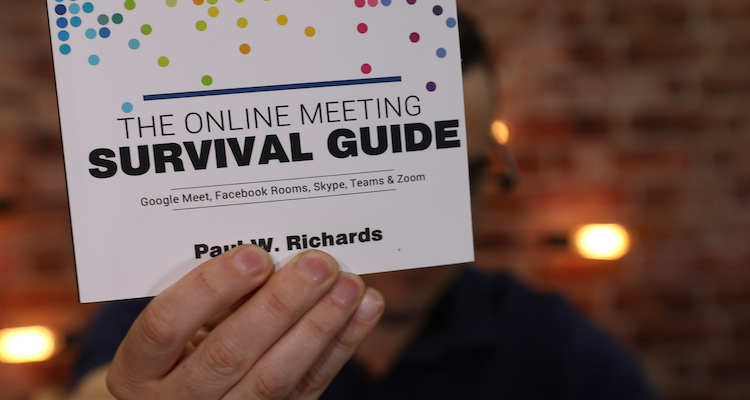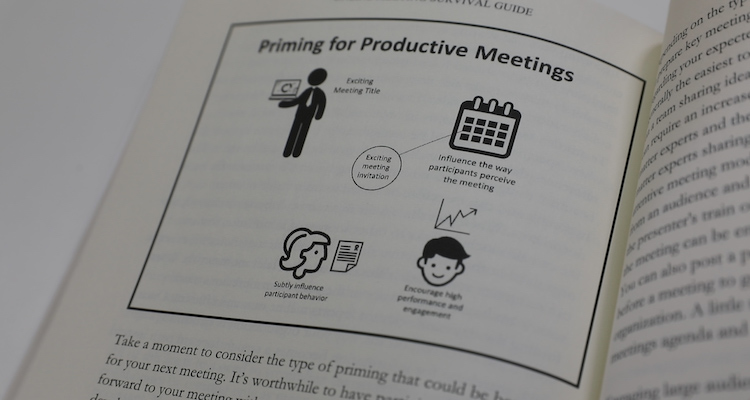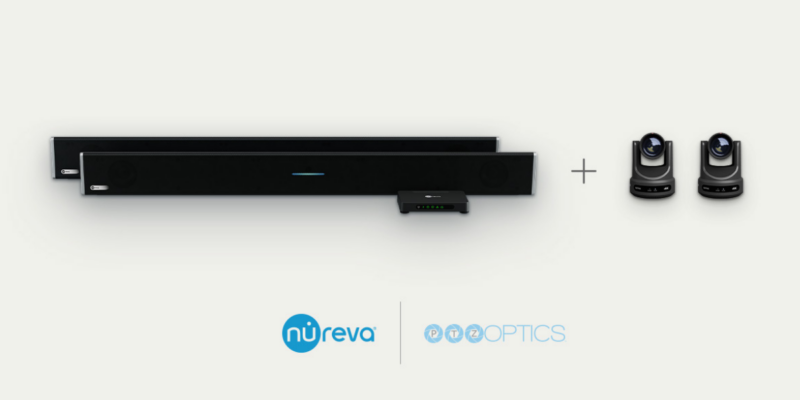After the Pandemic: Online Communications in a Post-COVID-19 World
THIS IS A PROMOTED POST FROM PTZOPTICS

By Paul Richards
Chief Streaming Officer, PTZOptics
The world’s largest work-from-home experiment has pushed the online communication industry forward at a record pace over the first two quarters of 2020. During this time of great change, adaptation has been key for everyone from students to teachers to governors to entrepreneurs. Everyone has been forced to learn how they will communicate using online technologies. Online communication technology has helped to keep friends, families and businesses connected during a time of unprecedented social distancing and shelter in place orders due to the COVID-19 outbreak. Businesses have flocked to cloud-based solutions for collaboration at work, while regular friends and families have flocked to familiar social media networks to stay connected. Throughout this time, the use of online communications has boomed, so much so that governments have had to ask social media websites such as YouTube to restrict video resolutions in order to reduce global bandwidth demands. When the world needed online communication technologies during a crisis, the goods news was that many solutions were ready and waiting.
During this time, Zoom Video Conferencing emerged as a clear winner in the videoconferencing space. Online workspaces such as the G Suite and Office 365 saved the day for businesses out of a necessity to collaborate online. As they say, necessity is the mother of invention, and as millions re-learned what it meant to collaborate online, the explosion of face-to-face meetings was hosted overwhelmingly by Zoom, Microsoft Teams, Google Meet and Skype. Zoom became so popular, the company reported 30 times growth in as few as two months.
Zoom has become known as the social media of the pandemic, becoming a household name almost overnight. Does the winner take all in the videoconferencing space? Only time will tell, but Google has responded by making its product free for up to 100 users. Facebook has also announced that its new Messenger Rooms product will be available for free for up to 50 users. Has the video communications industry been pushed forward about five years? I’d say so.
All the way back in 2012, Daniel Pink published the first of its kind research proving eight out of nine jobs require what Pink calls “non-sales selling.” His book “To Sell is Human” proved the majority of modern workers spend 40 percent of their time convincing, persuading and communicating with others. The fastest-growing job sectors — education and medicine — rank communications as the most important part of the job. Fast forward to 2020, and every K-12 and higher education organization is in the process of learning how to use distance learning technologies. Telemedicine has become standard practice, and healthcare systems are accelerating progress and seeking government funding to assist with implementation.
Similarly, houses of worship have adapted quickly using not only one-way broadcasting on social media but now becoming power users of two-way video communications in order to stay connected with their communities. Many churches are finding their congregations are much farther spread out and “far flung” then they had originally known. Businesses, as well, have flocked to cloud-based solutions for collaboration racing to maintain business continuity during a time when their traditional office spaces have been temporarily shut down.
Adapting to new situations, houses of worship are perhaps the best examples of communities that rely on communications to survive and ultimately thrive. Many churches had already invested in one-way broadcasting technology for live streaming that seems like a great solution during the pandemic outbreak. While live streaming kept communities connected, most were quick to realize that two-way communications were necessary in order to continue the type of fellowship their communities cultivate. Some churches decided to take an audio output from their mixing boards and feed it into a PTZOptics 20X-USB camera’s audio input port in order to connect the camera they bought for live streaming into a Zoom meeting. This solution allows them to have smaller groups of Zoom meeting participants who can see each other and interact in a space more familiar than that of a live broadcast on Facebook. In these small Zoom meetings, families can actually see each other and use small breakout rooms for spiritual sharing.
Even as social distancing limitations lift, houses of worship expect a slow return to normal. Many elderly members will proceed with caution when it comes to attending public gatherings in the aftermath of COVID-19. A new study shows that businesses will be adapting as well, asking more employees to continue working from home, after they have proven the glove fits for many in their organizations. Gartner (Gartner, April 2020) showed that 74 percent of CFOs surveyed say they expect to move previously on-site employees to remote work permanently post COVID-19. The public’s familiarity with online communications is currently at an all-time high. Twenty million people a day continue to download the Zoom videoconferencing application, most doing so to join meetings hosted by others. But how many will open their eyes to the new opportunities of online communications?
The world’s webcam manufacturers could not keep up with demand as the movement toward online communications boomed. Luckily, agile cloud-based videoconferencing solutions were able to scale with demand along with social media broadcasting solutions such as Facebook, YouTube and Twitch. Looking ahead, it’s natural to develop a favorite videoconferencing tool, a platform for live streaming and, of course, habits for consuming broadcasts and participating in online happy hours and private dinner parties. Innovations that would have otherwise taken years are now happening at break-neck speeds out of sheer necessity. Does a black-tie zoom party sound ridiculous? Maybe the first time you get invited but, once you missed out on the opportunity, don’t you wonder what the experience might have been like?
On the hardware side of online communications, new tools have been announced to keep pace with the innovation happening for both live streaming and videoconferencing. A new notable webcam called the HuddleCamHD Pro is the first USB webcam to offer pan, tilt and zoom features for consumers in the form factor of a webcam. The new USB-connected webcam allows users to zoom in and even recall PTZ camera presets, making full use of a 4K image sensor even when connected to a 720p zoom call. Other solutions more popular in churches include the PTZOptics 20X-USB cameras which feature high optical zoom paired with easy to use smartphone applications for controls.
This type of adaptation has happened all around the world in almost every industry. Maybe you haven’t joined a spiritual sharing group meeting, but you have been asked to join a videoconferencing service you were previously unfamiliar with. You’ve been asked to join back-to-back Zoom, Teams and Google Meet meetings for work. Eventually, you’ll likely be scrolling through your Facebook news feed and see the new Facebook Rooms popping up with a group of your friends having a casual conversation, right in your newsfeed! This is the type of future we are living in. And it’s happening right now.
Hundreds of companies like Zoom, HuddleCamHD, and PTZOptics are racing to innovate on top of new customer requirements. One truth that may only be obvious to professionals in the communications industry is that this market is only scratching the surface of its full potential. As millions of people are innovating on top of modern video communications, new workflows, mindsets and eventually business models will emerge. Right now thought leaders and non-technical digital migrants alike are testing out ideas with video communications. On the front lines I have heard hundreds of Zoom plus “your value add” ideas in the past few weeks. Zoom plus art therapy, it could be a winning business. My personal favorite is FieldTripZoom, who has actually become so popular that they had to switch from using Zoom and move to livestreaming in order to accommodate its large viewership numbers.
Another more advanced scenario is PTZOptics plus Twitch. Twitch is a livestreaming platform with a monetization system built to allow audience members to pay in bits to receive thanks from broadcasters. Using the PTZOptics Twitch extension, audiences can actually pay to gain backstage control of a live camera in front of a live audience. Talk about bringing an audience into an environment and engaging them, this may be the pinnacle of audience engagement. Most PTZOptics and HuddleCamHD cameras can also offer this type of far-end camera controls via Zoom, when enabled by the meeting host.
All of this is to say that online communications need to be customized to help most users to reach their next level of productivity and value. At a time like this, with so much going on and so much opportunity for so many, it’s often a good idea to read a book about the subject. And that’s exactly why I have written “The Online Meeting Survival Guide,” which is designed to familiarize the top online collaboration solutions for readers including Google Meet, Facebook Rooms, Skype, Microsoft Teams and Zoom.

This is not my first book, but it’s important to note that every book I have ever written is always made available for free via a digital copy. Why? Collaboration. The same drivers that boost open-source code work with ideas and this book is a perfect example. So pick up a free copy at PTZOptics.com/online-meetings or pick up a paperback copy on Amazon. I hope you enjoy it. Perhaps, it’s a resource for your customers, perhaps it’s a resource for your team as they adapt and become better online collaborators. If you enjoy the book, please send me a comment via email at paul.richards@ptzoptics.com. We are also hosting a virtual conference called the PresenceSummit designed to collaborate on many of these topics with other industry professionals.





